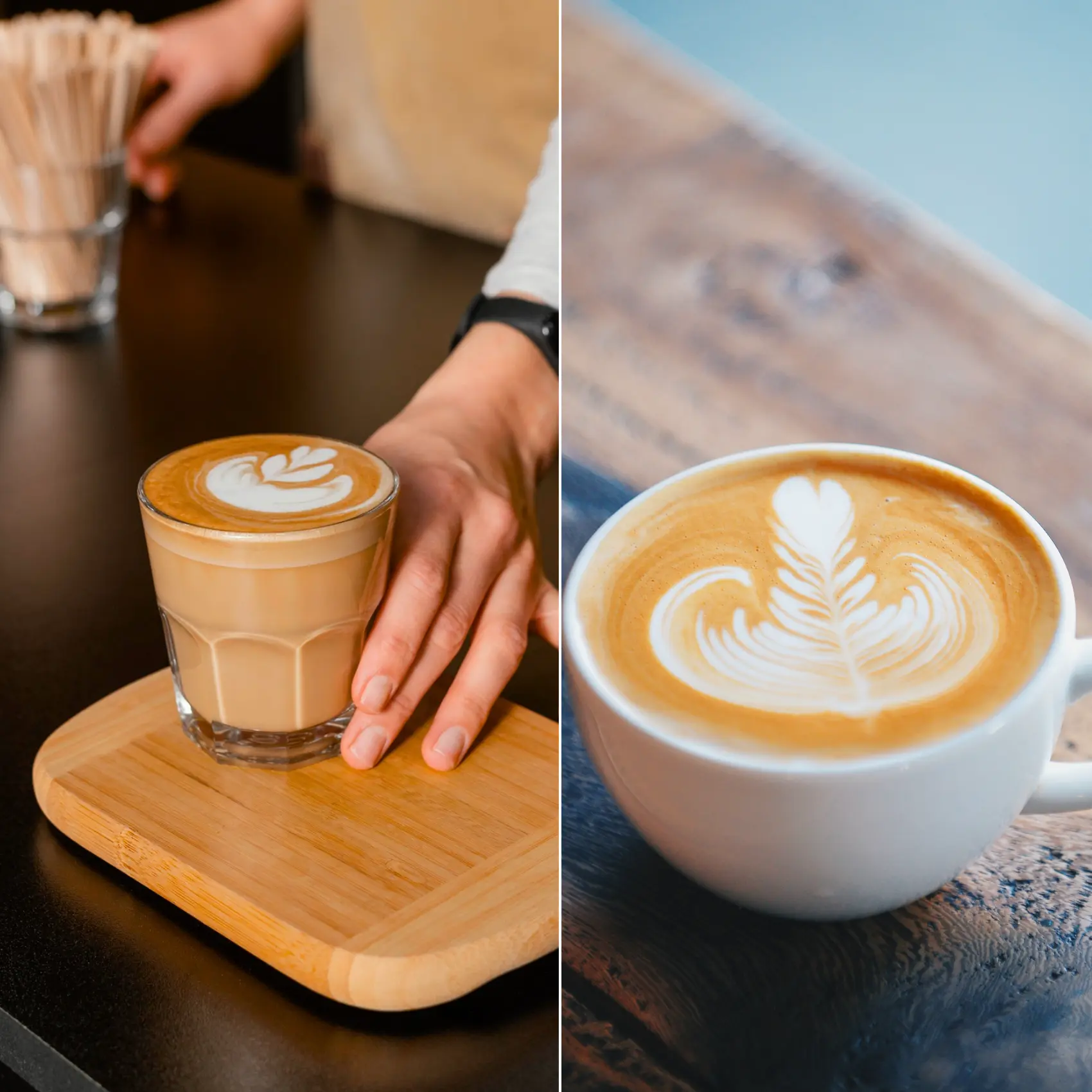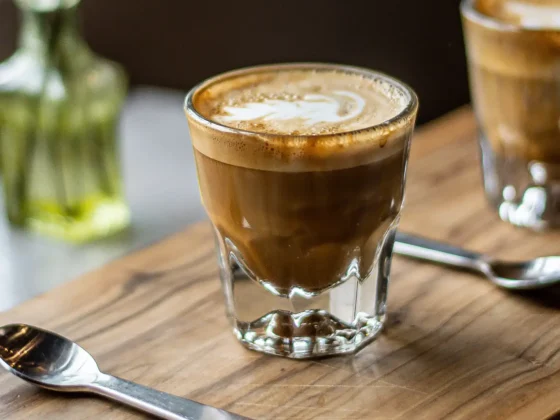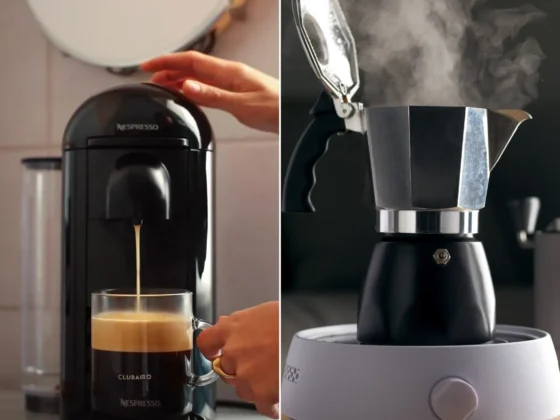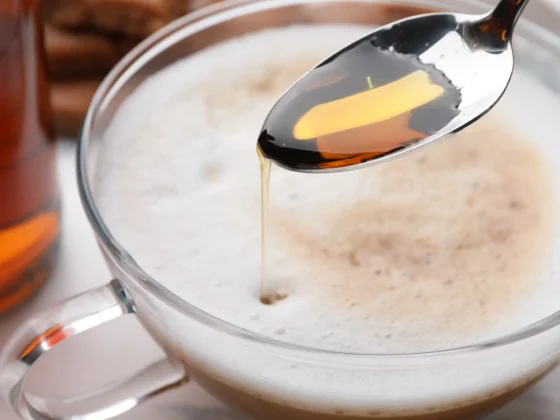In the vast and intricate world of coffee, the comparison of Cortado vs Cappuccino stands out as a topic of interest for both coffee aficionados and casual drinkers alike. These two beverages, each with its unique preparation, taste, and cultural significance, offer distinct experiences to the coffee enthusiast. Understanding the differences and nuances between a cortado and a cappuccino is not just about taste preference; it’s about appreciating the art and tradition behind each of these beloved coffee drinks. This article delves into the various aspects of cortados and cappuccinos, from their flavor profiles and ideal drinking times to their nutritional content and cultural importance, providing a comprehensive guide for anyone looking to deepen their knowledge and appreciation of these classic coffee beverages.
Prefer to multitask? Let the article play in audio while you do other things.
- Introduction & Key Differences
- https://app.mysoundwise.com/tracks/16999331065902734e.mp3
- Understanding Cortado and Cappuccino Basics
- https://app.mysoundwise.com/tracks/16999331444935242e.mp3
- Flavor Profiles and Sensory Experiences
- https://app.mysoundwise.com/tracks/16999331901999102e.mp3
- Preparing the Perfect Cup
- https://app.mysoundwise.com/tracks/16999332533872578e.mp3
- Cultural Significance and Popularity
- https://app.mysoundwise.com/tracks/16999333212455718e.mp3
- Nutritional Aspects and Dietary Considerations
- https://app.mysoundwise.com/tracks/16999333993591611e.mp3
- Optimal Times for Enjoying Cortado and Cappuccino
- https://app.mysoundwise.com/tracks/16999335038299868e.mp3
- Conclusion & FAQs
- https://app.mysoundwise.com/tracks/16999335751888389e.mp3
Cappuccino vs Cortado: Key Differences
- Distinct flavor profiles: Cortados provide a smooth blend of espresso and milk, while cappuccinos offer a richer taste with layered espresso, steamed milk, and froth.
- Specific preparation techniques: A cortado is made with equal parts of espresso and lightly steamed milk, whereas a cappuccino consists of one-third espresso, one-third steamed milk, and one-third milk froth.
- Cultural roots and adaptations: The cortado originates from Spain and symbolizes modern coffee elegance, while the cappuccino, hailing from Italy, enjoys global popularity with various adaptations like iced and mocha cappuccinos.
- Nutritional content: Cortados generally have lower calories, especially when made with non-fat milk, while cappuccinos can vary in caloric content depending on the type of milk and added sweeteners or flavorings.
- Optimal times for consumption: Cortados are versatile and can be enjoyed anytime, while cappuccinos are traditionally consumed in the morning or as a luxurious treat at social gatherings.
Understanding Cortado and Cappuccino Basics
In the diverse and aromatic world of coffee, the cortado and cappuccino stand out as two of the most beloved beverages. Each with its own unique characteristics and preparation methods, these drinks have captivated coffee lovers worldwide.
What is a Cortado?
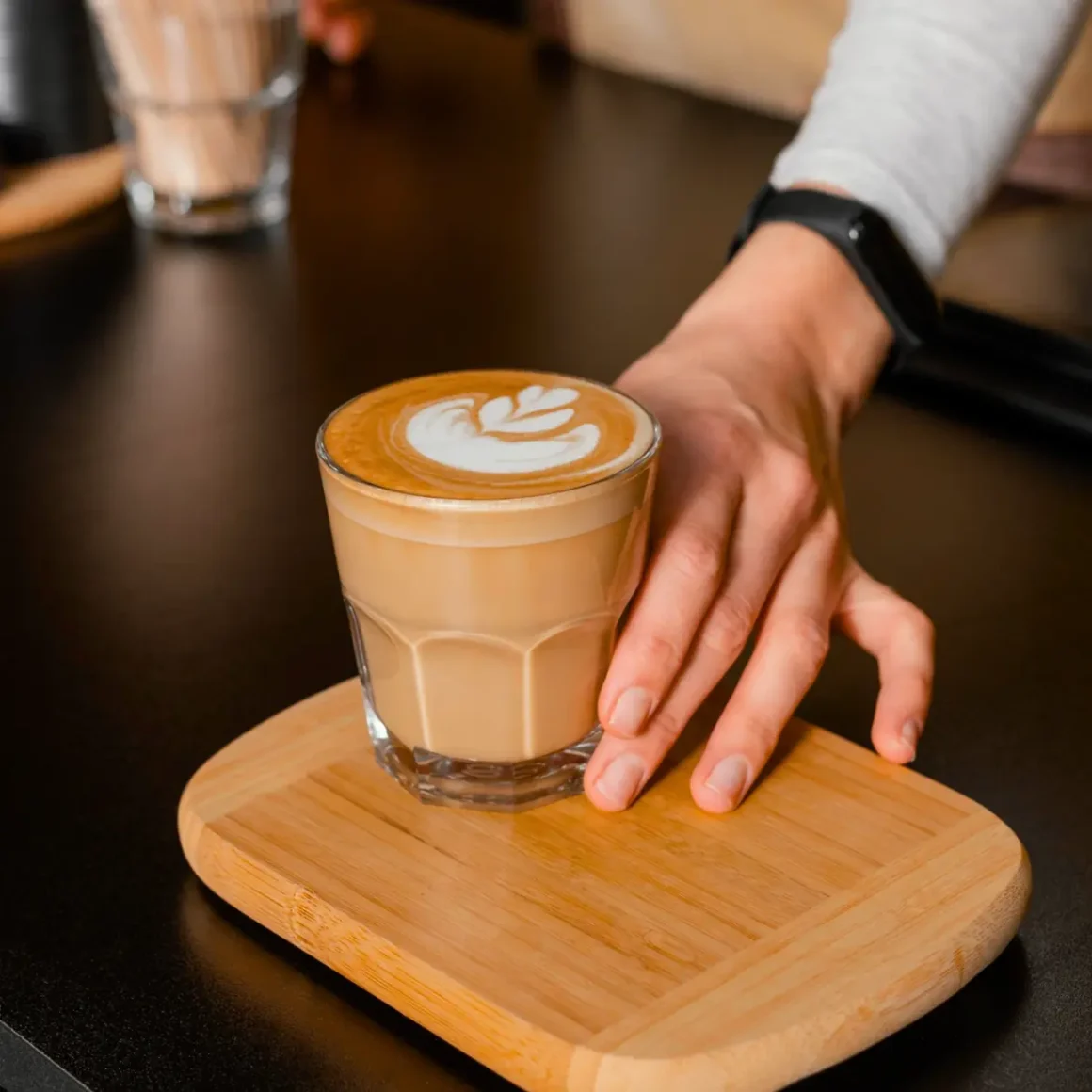
A cortado, a term derived from the Spanish word “cortar” (meaning to cut), is a popular coffee beverage that balances the intensity of espresso with a small amount of warm milk. This combination is intended to “cut” the acidity and strength of the espresso. Here are some key points about this drink:
- Espresso to Milk Ratio: Typically, a cortado consists of an equal ratio of espresso to warm milk. (1) This differs from other milk-based coffees, where milk is usually in a higher proportion.
- Milk Texture: The milk in a cortado is lightly steamed and not frothy, unlike many other espresso-based drinks. This results in a denser and creamier texture.
- Serving Size: Cortados are generally served in small glasses or cups and are smaller in volume compared to other coffee drinks.
What is a Cappuccino?

A café cappuccino is a classic Italian coffee drink known for its harmonious blend of espresso, steamed milk, and milk froth. It’s a staple in coffee culture worldwide, characterized by its distinct layers and rich flavor. Key aspects include:
- Layered Composition: A traditional cappuccino consists of equal parts of espresso, steamed milk, and frothy milk. (2) This creates a layered effect that is both visually appealing and integral to its taste.
- Milk Froth: The frothy milk on top is a defining characteristic, often spooned onto the drink to create a thick, airy layer.
- Serving and Customization: Served in larger cups than a cortado, cappuccinos offer room for personalization, such as the addition of chocolate shavings or cinnamon.
Brief Historical Overview of Each Drink

Originating from distinct European cultures, these drinks have not only become symbols of their respective coffee traditions but also have evolved over time, adapting and integrating into the global coffee scene.
- Cortado Coffee: The cortado originated in Spain and has been a part of Spanish coffee culture for many years. Its appeal lies in its simplicity and the way it offers a middle ground between strong espresso and milk-heavy drinks like lattes.
- Cafe Cappuccino: The roots of the cappuccino date back to the 19th century in Italy. The name is inspired by the Capuchin friars, referencing the color of their robes. (3) The drink evolved with the advent of espresso machines, allowing for the creation of the frothy milk that is so characteristic of the cappuccino today.
Both the cortado and the cappuccino coffee have evolved over time, adapting to local tastes and preferences, but they remain staples for coffee enthusiasts worldwide. Whether you prefer the smooth, balanced flavor of a cortado or the rich, layered complexity of a cappuccino, each offers a unique coffee experience.
Cortado vs Cappuccino: Flavor Profiles and Sensory Experiences
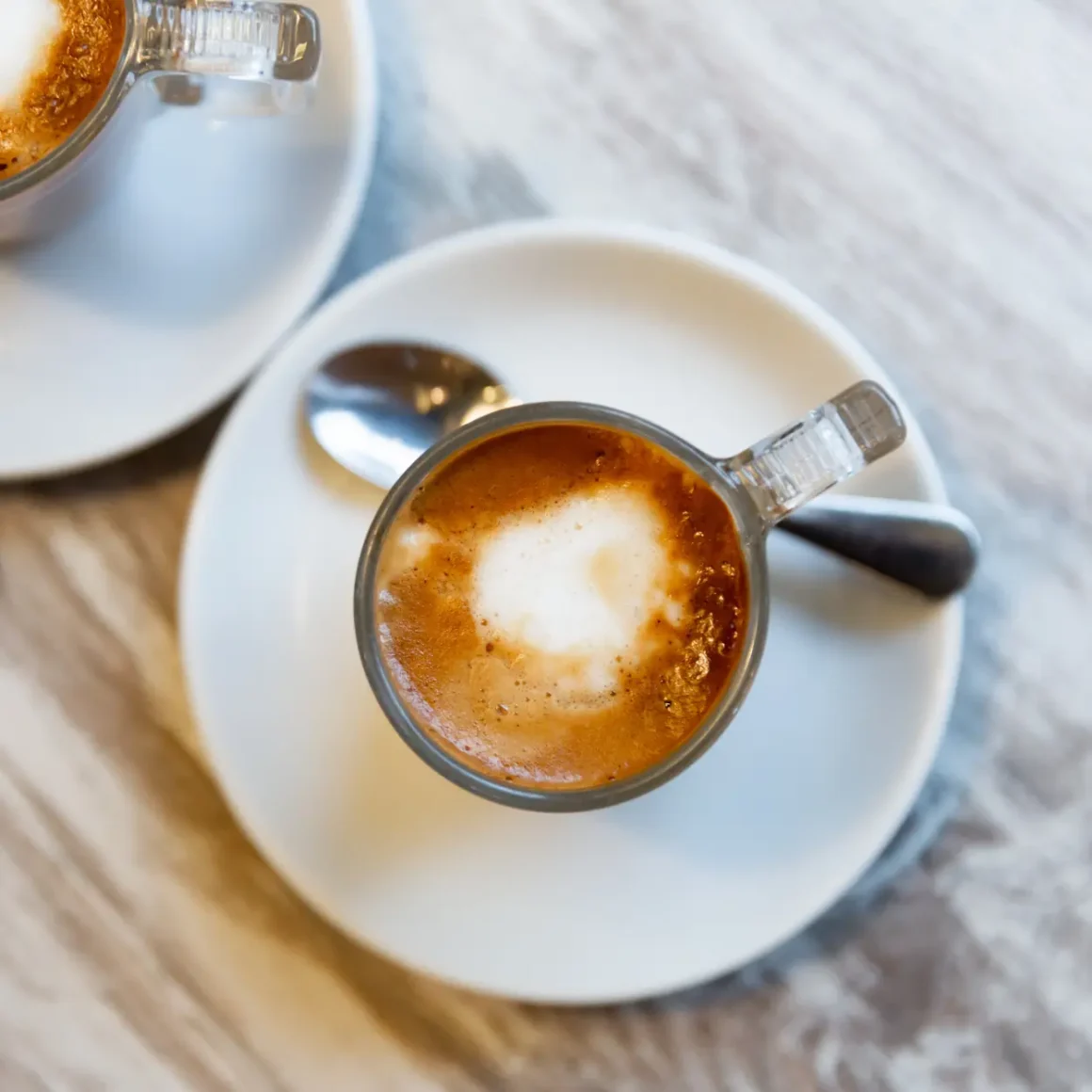
Exploring the world of coffee, particularly through drinks like cortados and cappuccinos, is not just about understanding their preparation; it’s about immersing oneself in the sensory experiences they offer. The flavor profile of these beverages is shaped by the delicate balance of their ingredients, revealing a unique tapestry of tastes and aromas.
What Does a Cortado Taste Like?
Understanding what is a cortado in terms of its taste involves appreciating the harmony between espresso and milk. The cortado meaning, to cut, is apt, as the drink cuts through the robust flavors of espresso with the softening touch of milk. (4) Key sensory notes include:
- Balanced Acidity and Bitterness: The espresso’s inherent acidity and bitterness are mellowed by the milk, creating a smooth, well-rounded flavor.
- Richness Without Overpowering: Unlike drinks with higher milk content, cortado coffee maintains the espresso’s richness without being overpowering.
- Subtle Sweetness: The lactose in the milk adds a hint of natural sweetness, complementing the espresso’s complex flavors.
Tasting Notes of a Cappuccino
A cafe cappuccino offers a multi-layered sensory experience. The caffeine in cappuccino, combined with its distinctive layers, creates a rich and complex profile:
- Bold Espresso Foundation: The bottom layer of espresso provides a strong, robust base, rich in flavor.
- Creamy Mid-Layer: Steamed milk softens the espresso’s intensity, adding creaminess and body.
- Frothy Top: The airy froth adds a light and velvety texture, often enhancing the overall taste with optional toppings like cinnamon or cocoa.
The Impact of Milk and Espresso Ratios
The ratio of milk to espresso is crucial in defining the overall flavor and experience of these coffee drinks:
- Cortado Coffee: The equal ratio of espresso to milk in a cortado ensures a balanced profile, where neither the strength of the espresso nor the creaminess of the milk dominates.
- Cappuccino Coffee: In cappuccinos, the one-third ratio of each component (espresso, steamed milk, and froth) creates a layered effect. This not only influences the taste but also the mouthfeel and the way the flavors unfold as you sip.
While both the cortado and cappuccino contain espresso and milk, their distinct ratios and preparation methods create vastly different flavor experiences. The cortado offers a smooth, balanced cup, perfect for those who enjoy the essence of espresso with a touch of creaminess. In contrast, the cappuccino provides a richer, more textured experience, ideal for those who appreciate a bold coffee flavor complemented by the softness of steamed milk and the lightness of froth. Each drink, in its own way, represents the best coffee experience for different preferences and palates.
Preparing the Perfect Cup of Cortado or Cappuccino
Crafting the perfect cup of coffee is an art that combines skill, precision, and a deep understanding of the ingredients. Whether you’re making a cortado or a cappuccino, the process involves more than just mixing espresso with milk. This section will guide you through how to make a cortado and how to make a cappuccino, offering step-by-step instructions and highlighting common mistakes to avoid. By mastering these techniques, you can enjoy what is often considered the best coffee experience right at home.
How to Make a Cortado: Step-by-Step Guide

A cortado coffee, known for its balanced espresso and milk composition, requires careful attention to detail. Here’s how to make a cortado:
- Brew the Espresso: Start by brewing a single or double shot of espresso (about 30-60ml) using high-quality coffee beans.
- Steam the Milk: Heat a small amount of milk (equal to the volume of the espresso) until it’s warm but not frothy. The ideal temperature is around 65°C (149°F).
- Combine Espresso and Milk: Pour the steamed milk over the espresso in a small glass or cup. The milk should “cut” through the espresso, softening its acidity and bitterness.
- Serve Immediately: Enjoy your cortado while it’s fresh and warm.
How to Make a Cappuccino: Step-by-Step Guide
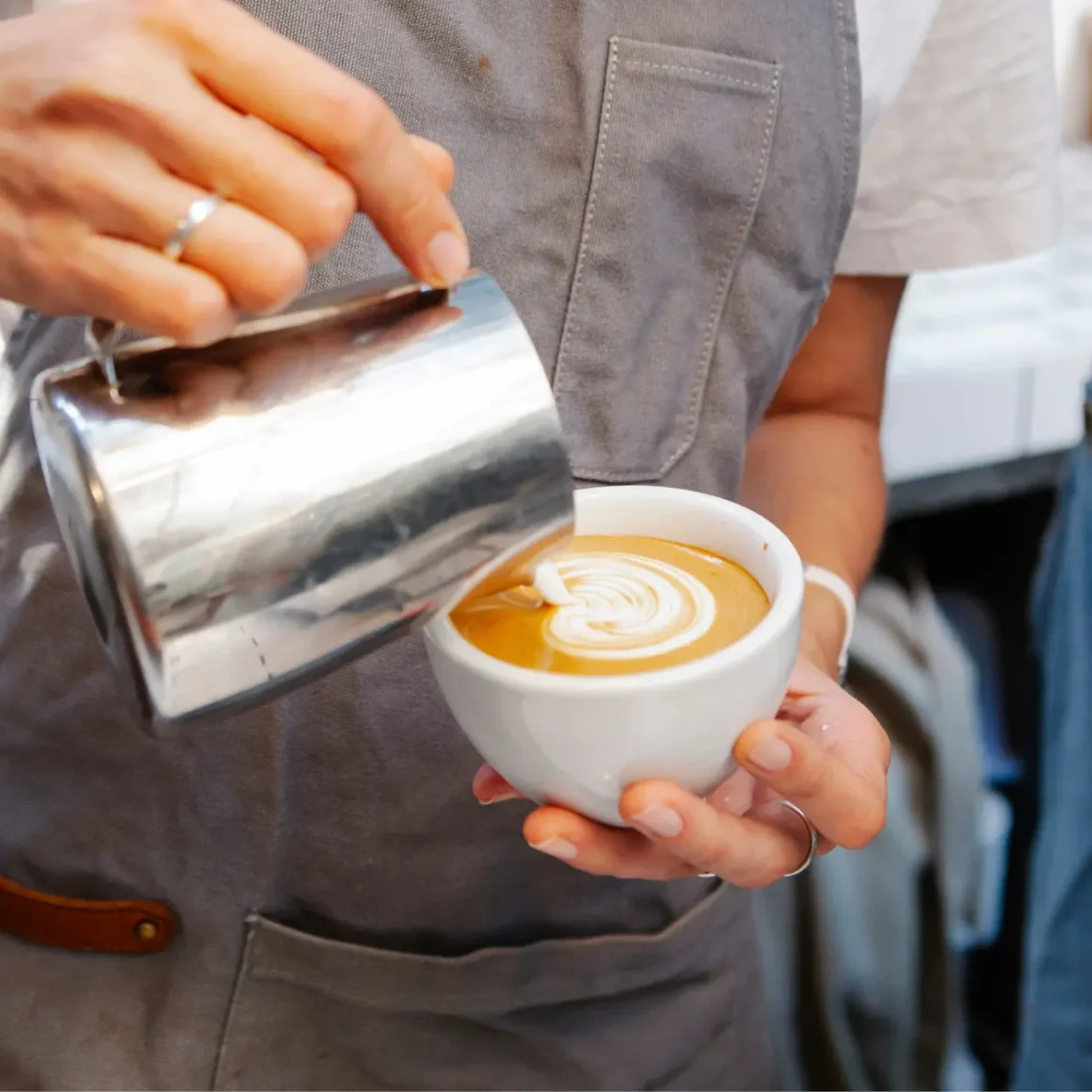
Creating a cafe cappuccino involves a balance of espresso, steamed milk, and froth. Follow these steps:
- Brew the Espresso: Prepare a strong shot of espresso (about 30ml) using a quality coffee machine.
- Steam and Froth the Milk: Heat the milk to about 65°C (149°F) and use a milk frother to create a rich, creamy froth.
- Layer the Drink: First, pour the espresso into a cappuccino cup. Then, add an equal amount of steamed milk. Finally, top with an equal amount of milk froth.
- Add Finishing Touches: Optionally, sprinkle some cocoa powder or cinnamon on top for an extra flavor.
Common Mistakes and Tips for Mastery

In the world of crafting delicious cortado coffee and cafe cappuccino, mastering the art requires not only a passion for the brew but also a keen understanding of the nuances involved.
- Overheating the Milk: Avoid scalding the milk. It should be warm and creamy, not boiling.
- Wrong Milk-to-Espresso Ratio: Remember, a cortado requires an equal ratio, while a cappuccino needs a one-third ratio of espresso, steamed milk, and froth.
- Not Using Fresh Coffee: The quality of the coffee beans dramatically affects the flavor. Use freshly ground beans for the best results.
- Neglecting the Espresso Quality: Invest in a good espresso machine and learn to pull a perfect shot. The espresso is the foundation of both drinks.
- Ignoring Cleanliness: Regularly clean your coffee machine and tools to ensure the best taste.
By understanding and avoiding these common pitfalls, you can refine your barista skills and consistently create delicious, café-quality cortados and cappuccinos at home. Whether you’re a fan of the smooth, balanced taste of a cortado or the rich, layered depth of a cappuccino, mastering these techniques will elevate your coffee experience.
Cultural Significance and Popularity
The world of coffee is rich with tradition and innovation, and each beverage carries its unique cultural significance and global appeal. The cortado and cappuccino, each with their distinct characteristics, have woven themselves into the fabric of coffee culture worldwide. Understanding their impact goes beyond simply asking what is a cappuccino, or exploring the essence of a cortado. It’s about appreciating how these drinks have shaped and been shaped by the societies that cherish them.
Cortado in Contemporary Coffee Culture

The cortado, with its Spanish origins, has become a symbol of modern coffee sophistication. Here’s how it fits into today’s coffee scene:
- A Symbol of Minimalism: In an age where simplicity and minimalism are increasingly valued, the cortado stands out for its straightforward composition and understated elegance.
- Adaptation Across Cultures: While remaining true to its roots, the cortado coffee has been adapted to various coffee cultures, finding its place in cafes worldwide.
- Preference Among Coffee Purists: Due to its balanced espresso-to-milk ratio, it’s favored by those who seek to enjoy the pure flavor of espresso with just a touch of milk.
Cappuccino’s Global Appeal

The cappuccino coffee, with its rich Italian heritage, has transcended borders, becoming a beloved part of the global coffee experience:
- Morning Ritual: In Italy, a cappuccino is traditionally consumed in the morning, often paired with a pastry or biscotti.
- Versatility and Adaptability: The cappuccino has adapted to various tastes and preferences around the world, leading to the creation of numerous variations.
- Icon of Coffee Culture: Recognized globally, the cappuccino represents the art of coffee making, with its carefully crafted layers and frothy top.
Cappuccino Drink Variations

The versatility of cappuccino coffee has led to a myriad of variations, catering to diverse tastes and preferences:
- Iced Cappuccino: A refreshing twist on the classic, often enjoyed in warmer climates or as a summer alternative.
- Dry Cappuccino: Features less steamed milk and more foam, resulting in a stronger espresso flavor.
- Freddo Cappuccino: Popular in Greece, it’s a cold version with frothed milk atop iced espresso.
- Bone Dry Cappuccino: Contains only espresso and foam, with no steamed milk, for an even stronger flavor.
- Mocha Cappuccino: A chocolate-infused version, combining the rich flavors of a traditional cappuccino with the sweetness of chocolate.
These variations demonstrate the dynamic nature of coffee culture, where traditional recipes are constantly being reinvented to suit evolving tastes and preferences. The cortado and cappuccino, in their classic forms and modern adaptations, continue to be celebrated and enjoyed by coffee enthusiasts around the world.
Nutritional Aspects and Dietary Considerations
When it comes to coffee, the nutritional aspects are often overlooked in favor of flavor and aroma. However, understanding the caloric content and dietary implications of popular coffee drinks like the cortado and cappuccino is crucial for those mindful of their dietary intake.
Caloric Content of Cortado

Cortado coffee, known for its equal mix of espresso and steamed milk, presents a modest caloric profile. Here are some key points:
- Basic Composition: A standard cortado typically contains one shot of espresso and an equal amount of steamed milk.
- Average Calories: Depending on the type of milk used, a typical cortado can range from 20 to 70 calories. The lower range is for non-fat milk, while the higher end accounts for whole milk.
- No Added Sugar: Cortados generally do not include added sugars, which helps in keeping the calorie count relatively low.
Caloric Content of Cappuccino

Understanding the calories for cappuccino requires considering its three-layered composition of espresso, steamed milk, and milk froth.
- Standard Serving Size: A traditional cappuccino typically consists of one-third espresso, one-third steamed milk, and one-third milk froth.
- Caloric Range: The caloric content can vary significantly, typically ranging from 60 to 150 calories. This variation depends on the type of milk and the addition of sweeteners or flavorings.
- Impact of Add-ons: Common additions like sugar, syrups, or chocolate can significantly increase the calorie count.
Dairy and Non-Dairy Variations
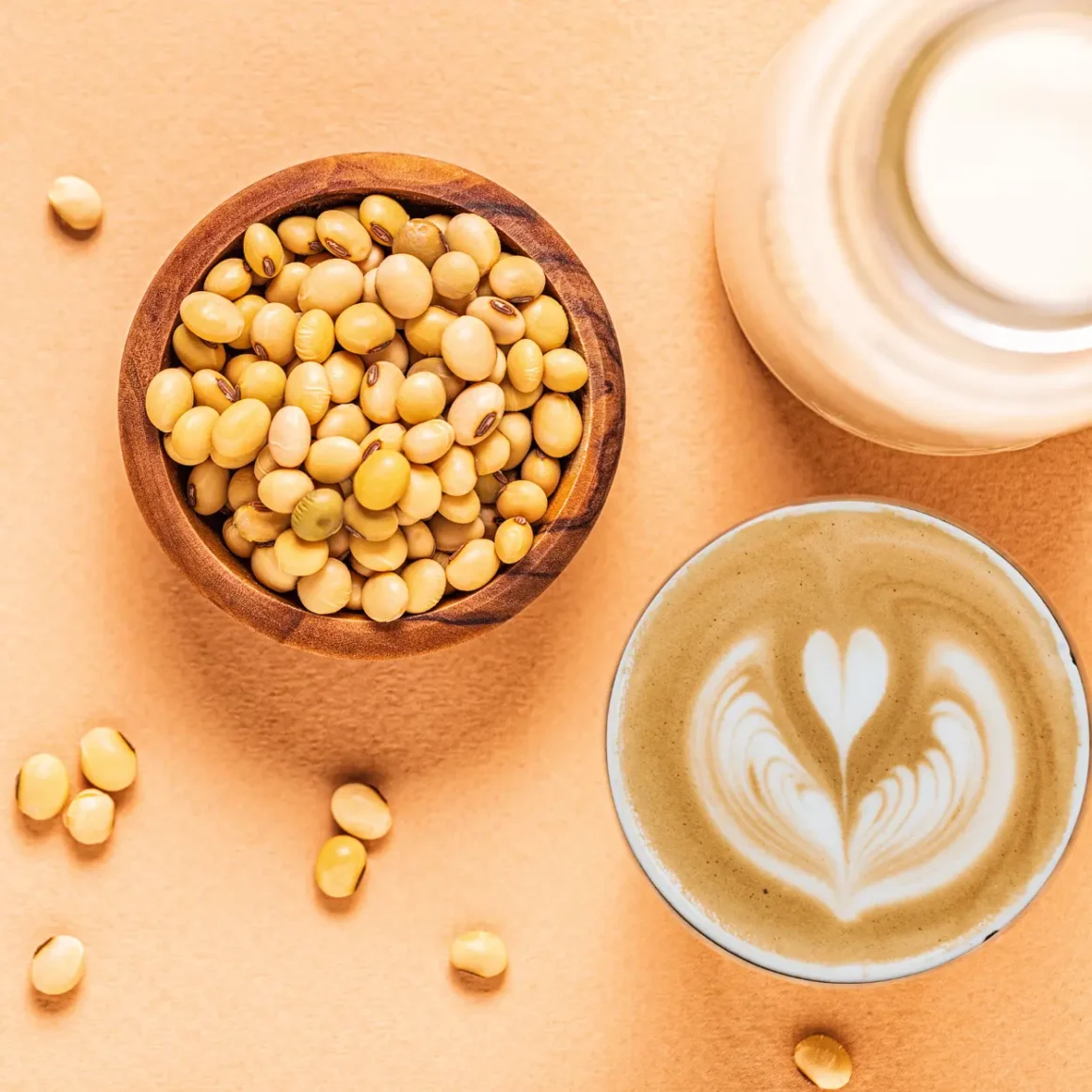
Both cortados and cappuccinos can be adapted to suit different dietary requirements and preferences:
- Dairy Milk Options: Whole milk provides a richer flavor but higher calories, while skimmed or low-fat milk reduces the calorie content.
- Non-Dairy Alternatives: Almond, soy, oat, and coconut milk are popular non-dairy options. They offer different nutritional profiles, with generally lower calories than whole milk but varying in terms of protein, fat, and carbohydrate content.
- Impact on Flavor and Texture: Non-dairy milks can alter the taste and texture of the coffee. For instance, soy milk offers a creamier consistency, while almond milk provides a nuttier flavor.
In summary, both cortado and cappuccino can be tailored to fit various nutritional needs and dietary preferences. By choosing different types of milk and being mindful of add-ons, coffee enthusiasts can enjoy these beloved beverages while aligning them with their dietary goals. Whether opting for a low-calorie cortado or a richly-flavored cappuccino, these drinks offer versatility not just in taste but also in their nutritional profiles.
Optimal Times for Enjoying Cortado and Cappuccino
The experience of enjoying a cup of coffee is not just about the drink itself but also about the timing and setting in which it is savored. Both the cortado and the cafe cappuccino offer unique experiences that can be enhanced when enjoyed at the right moment. From the ambiance to the time of day, various factors can influence how these beverages are best enjoyed.
Ideal Scenarios for Savoring a Cortado

The cortado, with its balanced espresso and milk composition, is a versatile drink that fits various settings and times:
- Morning Refreshment: Its balanced nature makes it a perfect morning drink, especially for those who want a caffeine kick without the heaviness of a larger milk-based coffee.
- Afternoon Pick-Me-Up: The cortado’s small size and equal espresso-to-milk ratio make it ideal for a quick, satisfying afternoon break that won’t disrupt your evening routine.
- With a Meal or Snack: The cortado’s simplicity pairs well with a variety of foods, from breakfast items to afternoon pastries, without overpowering the taste of the food.
Best Moments to Indulge in a Cappuccino

The cafe cappuccino, known for its rich layers of espresso, milk, and froth, offers a different kind of pleasure:
- Leisurely Mornings: Traditionally enjoyed in the morning, particularly in Italy, a cappuccino is perfect for a slow, leisurely start to the day.
- Social Gatherings: Its rich and inviting nature makes it ideal for café meetups and social gatherings, where the drink can be leisurely enjoyed while conversing.
- As a Dessert Coffee: The creamy and frothy texture of a cappuccino makes it a delightful post-meal treat, especially when complemented with a sweet dessert.
Seasonal Preferences and Time of Day Considerations

The enjoyment of a cortado or cappuccino can also be influenced by seasonal and temporal factors:
- Cortado in Warmer Seasons: Due to its smaller size and lighter composition, a cortado can be particularly refreshing during the warmer months or in warmer climates.
- Cappuccino in Colder Months: The warmth and richness of a cappuccino make it a comforting choice during colder seasons, providing warmth and comfort on chilly days.
- Time of Day: While cortados can be enjoyed any time, cappuccinos are typically preferred in the morning or early afternoon, as their frothy milk content can be a bit heavy for late evening consumption.
Summing up, both the cortado and the cafe cappuccino have their special moments and settings in which they shine the brightest. Whether it’s the crisp, straightforward appeal of a cortado for a quick caffeine fix or the indulgent, leisurely experience of a cappuccino, these coffee drinks offer varied experiences to suit different preferences, times, and seasons.
Conclusion
In conclusion, the exploration of Cappuccino vs Cortado offers coffee enthusiasts a deeper understanding of two of the most cherished beverages in the coffee world. While both drinks share common elements, like espresso and milk, their distinct preparation methods, cultural backgrounds, and flavor profiles set them apart. The cortado, with its balanced simplicity, suits those who prefer a straightforward coffee experience, where the essence of espresso plays a central role. On the other hand, the cappuccino caters to those who savor a richer, more textured drink, with its layers of steamed milk and froth adding a luxurious depth.
Understanding these differences not only enhances the coffee-drinking experience but also deepens our appreciation for the diverse and rich traditions of coffee culture. Whether you lean towards the smooth subtlety of a cortado or the indulgent complexity of a cappuccino, each offers a unique and satisfying way to enjoy the art of coffee.
FAQ
How does the preparation of a Cortado differ from that of a Cappuccino?
A Cortado is prepared with equal parts espresso and lightly steamed milk, while a Cappuccino is made with equal thirds of espresso, steamed milk, and frothy milk, requiring more skill in frothing.
What is the historical background of the Cortado and how has it evolved?
The Cortado originated in Spain and is characterized by its minimalist approach, evolving to become a popular choice in modern coffee culture for its smooth, balanced flavor.
In what ways does the Cappuccino's frothy texture influence its taste?
The frothy texture of a Cappuccino adds a creamy, velvety layer that balances the strong espresso base, enhancing the overall richness and mouthfeel of the drink.
Are there any significant health differences between a Cortado and a Cappuccino?
The main health difference lies in the calorie content; Cortados typically have fewer calories due to less milk, while Cappuccinos may have more, especially if additional flavorings or sweeteners are added.
